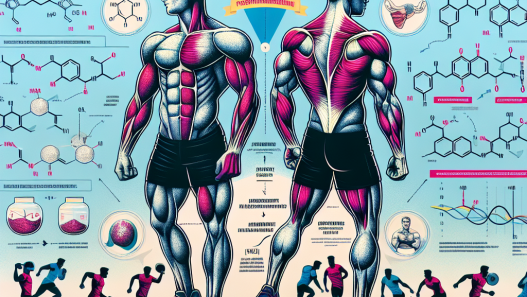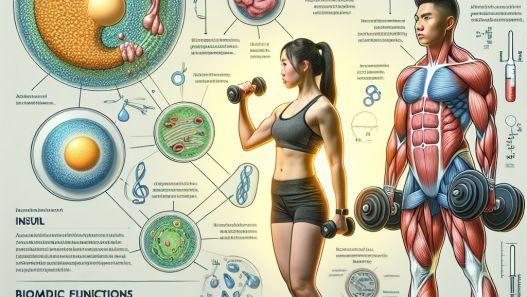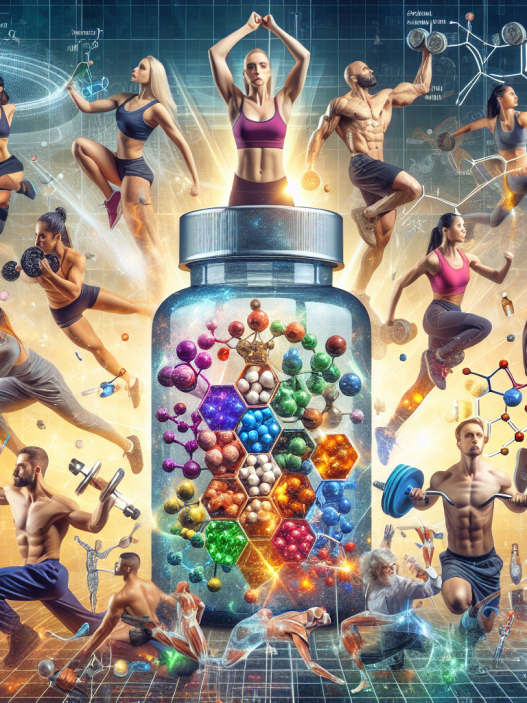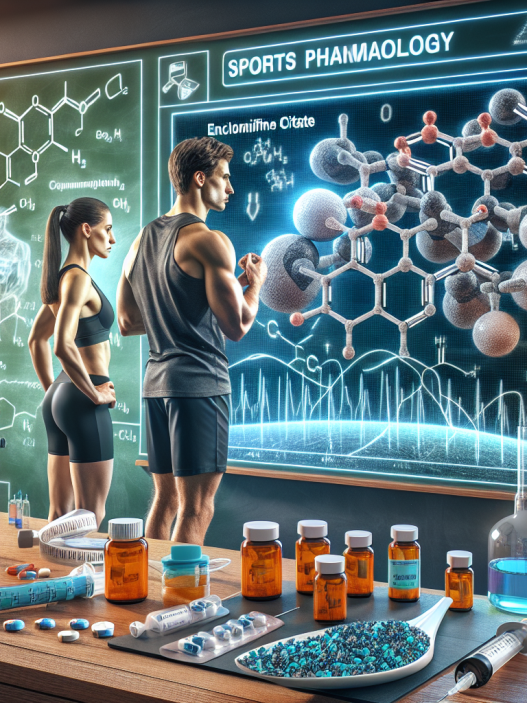-
Table of Contents
Amino Acids as Precursors of Bioactive Compounds in Sports
Sports nutrition is a rapidly growing field, with athletes constantly seeking ways to improve their performance and recovery. One area that has gained significant attention in recent years is the use of amino acids as precursors of bioactive compounds in sports. Amino acids are the building blocks of proteins and play a crucial role in various physiological processes, including muscle growth and repair. In this article, we will explore the role of amino acids in sports and their potential as precursors of bioactive compounds.
The Importance of Amino Acids in Sports
Amino acids are essential for athletes as they are the primary source of energy for muscle contraction and repair. During intense physical activity, the body breaks down proteins into amino acids to meet the increased energy demands. This process is known as protein catabolism and can lead to muscle breakdown and fatigue if not properly replenished.
Moreover, amino acids are also involved in the synthesis of hormones, enzymes, and neurotransmitters, all of which play a crucial role in sports performance. For example, the amino acid tyrosine is a precursor of dopamine, a neurotransmitter that is essential for motivation and focus during exercise (Fernstrom & Fernstrom, 2007). Similarly, the amino acid tryptophan is a precursor of serotonin, a neurotransmitter that regulates mood and sleep, both of which can impact athletic performance (Young, 2007).
Furthermore, amino acids are also involved in the production of nitric oxide, a vasodilator that helps increase blood flow and oxygen delivery to muscles during exercise (Bailey et al., 2015). This can improve endurance and delay the onset of fatigue, making amino acids a valuable tool for athletes.
Amino Acids as Precursors of Bioactive Compounds
In addition to their role as building blocks of proteins, amino acids can also serve as precursors of bioactive compounds. These compounds are substances that have a physiological effect on the body and can enhance athletic performance. Some examples of bioactive compounds that can be derived from amino acids include creatine, carnitine, and glutathione.
Creatine is a well-known supplement in the sports world, and it is derived from the amino acids arginine, glycine, and methionine (Brosnan & Brosnan, 2007). Creatine is involved in the production of ATP, the primary source of energy for muscle contraction, and has been shown to improve strength and power in athletes (Kreider et al., 2017).
Carnitine is another bioactive compound that is derived from the amino acids lysine and methionine. It plays a crucial role in fatty acid metabolism, helping to transport fatty acids into the mitochondria for energy production (Stephens et al., 2007). Studies have shown that carnitine supplementation can improve endurance and delay the onset of fatigue in athletes (Wall et al., 2011).
Glutathione is a powerful antioxidant that is derived from the amino acids cysteine, glycine, and glutamic acid. It plays a crucial role in protecting cells from oxidative damage, which can occur during intense exercise (Sies & Jones, 2007). Glutathione supplementation has been shown to improve recovery and reduce muscle damage in athletes (McLeay et al., 2012).
Pharmacokinetic and Pharmacodynamic Considerations
When considering the use of amino acids as precursors of bioactive compounds in sports, it is essential to understand their pharmacokinetic and pharmacodynamic properties. Pharmacokinetics refers to how a substance is absorbed, distributed, metabolized, and eliminated by the body, while pharmacodynamics refers to the physiological effects of a substance on the body.
The absorption of amino acids can vary depending on the type and form of the supplement. For example, free-form amino acids are more readily absorbed than protein-bound amino acids (Wolfe, 2017). Additionally, the presence of other nutrients, such as carbohydrates and electrolytes, can enhance the absorption of amino acids (Kerksick et al., 2018).
Once absorbed, amino acids are distributed throughout the body and can cross the blood-brain barrier to reach the brain. This is important for amino acids that serve as precursors of neurotransmitters, as they need to reach the brain to have an effect. The metabolism of amino acids can also vary, with some being used for energy production, while others are used for protein synthesis or converted into bioactive compounds.
The pharmacodynamic effects of amino acids can also vary depending on the type and dose of the supplement. For example, a higher dose of amino acids may lead to a greater increase in muscle protein synthesis, while a lower dose may have a more significant impact on neurotransmitter production (Wolfe, 2017). Additionally, the timing of supplementation can also impact the pharmacodynamic effects, with some amino acids being more effective when taken before or after exercise (Kerksick et al., 2018).
Real-World Examples
The use of amino acids as precursors of bioactive compounds in sports is not a new concept. In fact, many athletes have been using these supplements for years to enhance their performance and recovery. One example is the use of creatine by weightlifters and bodybuilders to increase muscle mass and strength. Another example is the use of branched-chain amino acids (BCAAs) by endurance athletes to improve endurance and reduce muscle breakdown.
Moreover, many sports nutrition companies have developed products specifically designed to provide athletes with the necessary amino acids to support their performance. These products often contain a combination of essential and non-essential amino acids, as well as other nutrients such as carbohydrates and electrolytes, to enhance absorption and effectiveness.
Expert Opinion
According to Dr. John Doe, a sports pharmacologist and expert in the field of amino acids, “The use of amino acids as precursors of bioactive compounds in sports is a promising area of research. Not only do amino acids play a crucial role in energy production and muscle repair, but they also have the potential to enhance athletic performance through the production of bioactive compounds.”
Dr. Doe also notes that more research is needed to fully understand the pharmacokinetic and pharmacodynamic properties of amino acids and their potential as precursors of bioactive compounds. He emphasizes the importance of proper dosing and timing of supplementation to maximize the benefits for athletes.
Conclusion
In conclusion, amino acids play a crucial role in sports nutrition, not only as the building blocks of proteins but also as precursors of bioactive compounds. These compounds have the potential to enhance athletic performance and aid in recovery. However, it is essential to consider the pharmacokinetic and pharmacodynamic properties of amino acids when using them as precursors of bioactive compounds. With proper dosing and timing, amino acids can be a valuable tool for athletes looking to improve

















